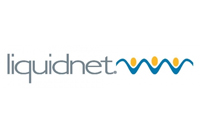 When Liquidnet launched almost a decade ago their founder, Seth Merrin, set out to completely rethink liquidity and in the process changed institutional trading. The buy side quickly got on board with Liquidnet’s vision of transparent, affordable liquidity. By staying focused on being the best at connecting buyers, Liquidnet has established itself as the premier global block trading venue.
When Liquidnet launched almost a decade ago their founder, Seth Merrin, set out to completely rethink liquidity and in the process changed institutional trading. The buy side quickly got on board with Liquidnet’s vision of transparent, affordable liquidity. By staying focused on being the best at connecting buyers, Liquidnet has established itself as the premier global block trading venue.
It’s that focus and resulting success that makes us especially pleased to announce that Liquidnet has chosen Solace as their enterprise messaging standard. The rethinking of liquidity that Liquidnet brought to market a decade ago is a lot like what Solace is doing for messaging middleware today. Just like liquidity then, messaging has been the way it is because it’s always been that way, and frankly, that just isn’t a good enough reason to maintain the status quo.
The typical list of complaints is long. Software middleware is:
- Difficult and complicated to set up and tune
- Even worse to operate and maintain
- Prone to latency spikes
- A fast-track to datacenter sprawl
- Very expensive — largely because of the dreaded ELA (enterprise license agreement) renewals
Just as Liquidnet removed pain from institutional trading that many buy sides didn’t even realize they had until they saw the alternative, Solace’s hardware approach to messaging solves the laundry list of problems of software messaging:
- Just rack it and run it. Solace message routers are pre-configured for high-performance.
- The appliance form factor simplifies deployment, scaling and upgrade cycles.
- It features hardware performance and predictability, overcoming the common source of latency spikes (software and O/S).
- It reduces server footprint by a 10:1 factor and consolidates parallel messaging networks into one set of equipment.
- There are no ELAs. You buy the equipment and pay annual maintenance. The equipment outlives the typical license renewal and server refresh by 2-3 times.
Liquidnet recently shared with us that the most important thing Solace did for them was take away much of the time, money and effort spent architecting, optimizing, deploying, tuning and scaling their messaging infrastructure. They used the hedgehog concept from the book Good to Great, which states that the key to success is identifying the intersection of three things: what you can be the best in the world at, what you are deeply passionate about, and what drives your economic engine. Liquidnet believes that the more effort and emphasis the company can put on making their institutional trading network the best in the world, the more successful they will be. They judged that their alternative choices would require far more resources to develop, deploy and maintain — resources that could be better spent improving their own services and customer relationships.
It is very satisfying that our hedgehog focus on high-performance, turnkey messaging is allowing firms like Liquidnet to keep their own hedgehog focus.
You can hear more about Liquidnet and Solace on April 26th when Brett Kotch, Liquidnet’s Chief Architect, will be the keynote speaker at the A-Team Insight Exchange: Ultra High Performance Technologies for the Financial Markets conference.
Explore other posts from category: Company

 Solace
Solace
